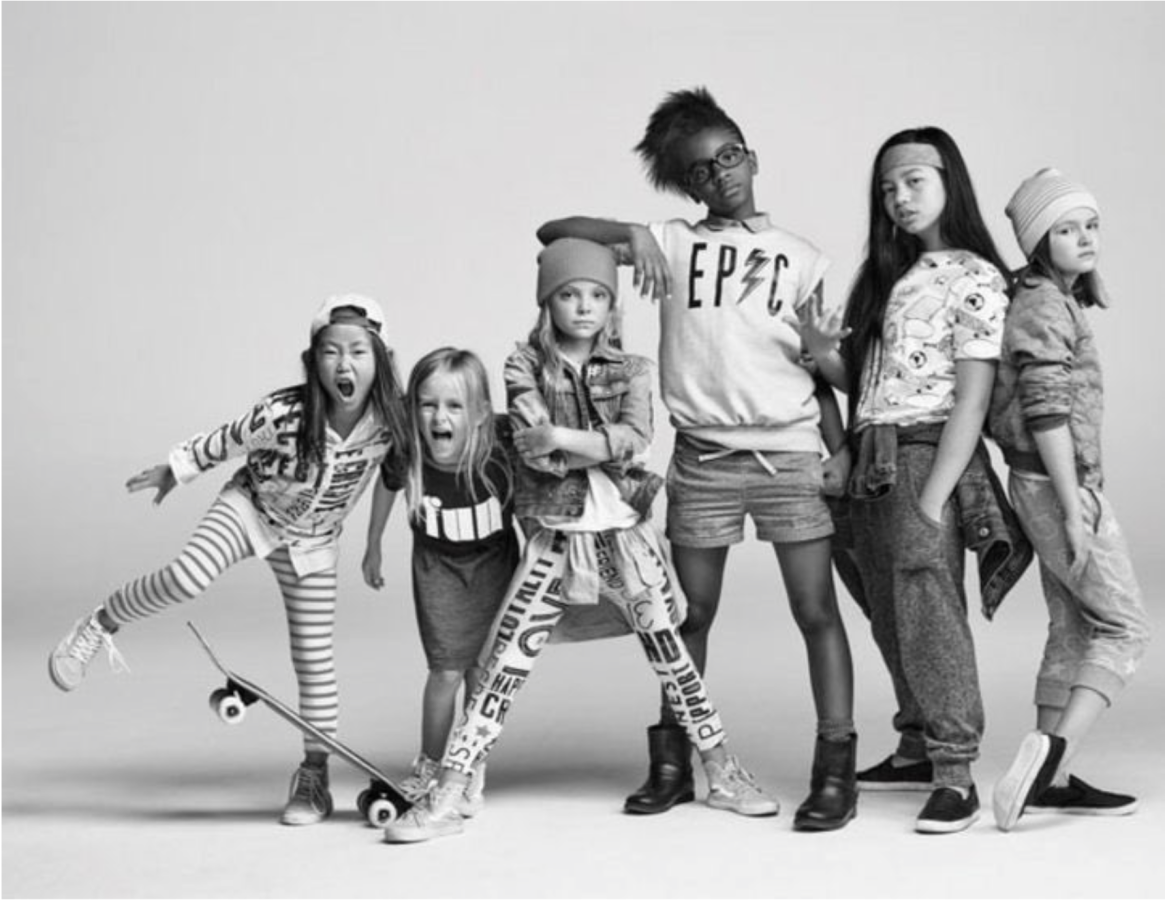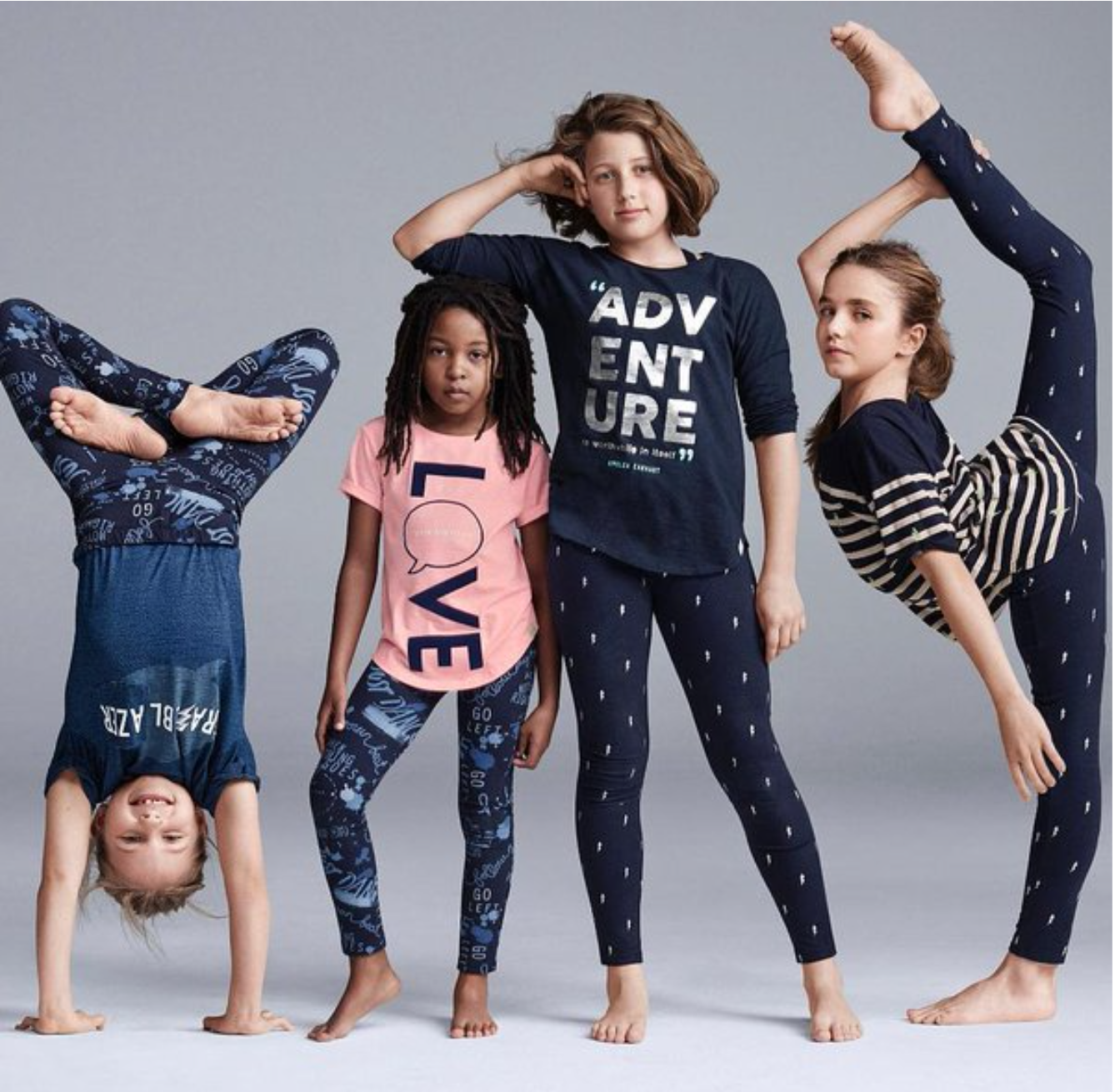The Internet outrage over the photo for a Gap Kids advertisement is rather ridiculous. The meme accuses racism, because the taller white tween rests her arm on the shorter black girl’s head. Gap was wrong to apologize and replace the pic, bowing before the will of social media bullies. They read too much into the modeling, and you shouldn’t side with their idiocy.
The posing isn’t unusual for Gap marketing, and there is at least one earlier instance where roles reversed: Black tween resting arm on the head of a white girl, as filmmaker Matthew A. Cherry tweets with question: “Does the @GapKids pic on the left make the pic on the right okay? Let’s debate”. The answer is immaterial, because motivation and meaning are assigned, in conspiratorial fashion. I look at the pic and could, purely for contrarian perspective’s sake, assign equally-outrageous interpretation.
A Different Dumb-Ass Theory
The Gap advertising campaign also features comedian Ellen DeGeneres, who is gay. The two girls in the center wear T-Shirts with writing that can be read right to left: “Love Adventure”, as in romantically, if taken as two nouns (e.g., “they’re going on a love adventure“). Someone could just as easily argue that the two tweens, wearing these tees in a clothier campaign in partnership with a female gay entertainer, subliminally encourage interracial lesbian love.
If you think that’s outrageous, why would it be less ridiculous than racist assigned-motivation, like the tweet from E. Tammy Kim: “White girls: Powerful, flexible. Black girl: Armrest”. Or, from Stevie W.: “@GapKids the best way to lose the black demographic. Making your only black model an armrest ?”. Or, from Team Brittana: “@GapKids Black girls are only useful as armrests, eh? I guess we should just be grateful she’s not being used as a chair… ? #diversityfail”.

For people advocating diversity and sexual preference tolerance, doesn’t the two girls who go on a “love adventure” meet muster? That ignores the earlier black-on-white arm-resting photo (which I haven’t authenticated but for now assume is legit)? Then there is this context: The four kids in the so-called controversial pic are from Le Petit Cirque, a Los Angeles, Calif.-based dance and circus troupe. They perform together!
Step back and think! Neither conspiracy theory—mine or the Internet rabble’s—makes bloody sense. Too many people make too much of the Gap’s intentions or the inferences the photo coneys. They also fan flames that can burn the career aspirations and self-esteem of the young, African-American model at the center of this, ah, manufactured controversy. What? You think she’s unaffected by the attention?
Social-Media Bully Pulpit
As a journalist, I warn my peers to beware the social media mob. Do not succumb to practicing “mob journalism“. My ebook ebook Responsible Reporting: Field Guide for Bloggers, Journalists, and Other Online News Gatherers dedicates a whole chapter to the concept, stated simplest: “Mob journalism is where the audience rules the news”.
Forty-three years ago, the clothier unleashed slogan: “Fall into the Gap”. The Internet mob fell into it this week, as did Gap by its retreat meant to protect the brand image. The apology and advert-change signal defeat—that social media bullies were right—and they will rub Gap’s nose in the shit they, and not the clothier, created.
I’m all for diversity, Nature is full of it. Human society needs more of it. But the controversy about Gap Kids advertising is less about promoting diversity and more about solidifying a single point of view from a social-media-driven bully pulpit.
The Internet is all about attention-grabbing and who yells the loudest to grub it. Motivations vary from bolstering ego to increasing profits. Anything can be interpreted and motivation assigned to it. You should always ask about anyone lifting social-media fists in outrage: “Who benefits?” The answer may shock you.
Photo Credits: Gap marketing
